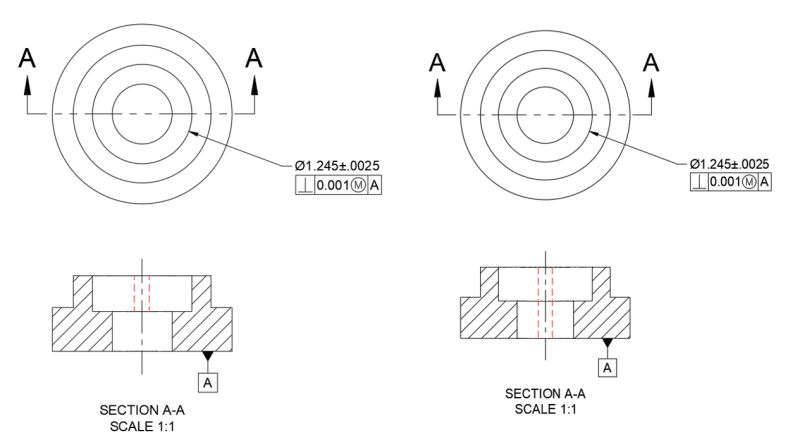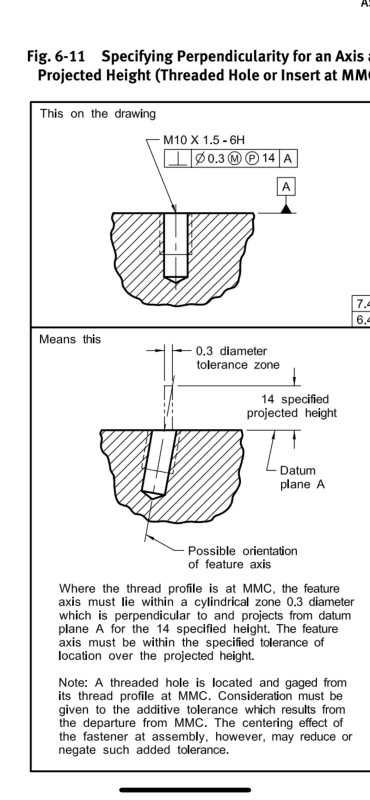TomDougherty
Mechanical
Hi, this probably has a super simple answer but I haven't been able to find concrete information on it.
I have a cylindrical part which has a hole that does not go completely through the part (see attached)(I am talking about the larger hole that is dimensioned). I need that hole to be perpendicular to the bottom face of the part (labeled datum A). The tolerance there is just a place holder for now. So for perpendicularity in this case would the tolerance zone be only the depth of the hole (left picture) or the entire length until it reaches datum A (right picture)?
Or maybe a better way to say it is what would be the length of the axis used in the tolerance zone? Only the depth of the hole or the entire axis until the datum? If it is only the depth of the feature then this gives a larger possible deviation in terms of angularity as opposed to the second option.
Thanks in Advance!
I have a cylindrical part which has a hole that does not go completely through the part (see attached)(I am talking about the larger hole that is dimensioned). I need that hole to be perpendicular to the bottom face of the part (labeled datum A). The tolerance there is just a place holder for now. So for perpendicularity in this case would the tolerance zone be only the depth of the hole (left picture) or the entire length until it reaches datum A (right picture)?
Or maybe a better way to say it is what would be the length of the axis used in the tolerance zone? Only the depth of the hole or the entire axis until the datum? If it is only the depth of the feature then this gives a larger possible deviation in terms of angularity as opposed to the second option.
Thanks in Advance!


